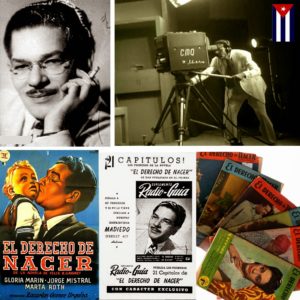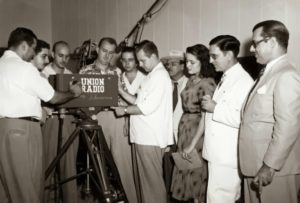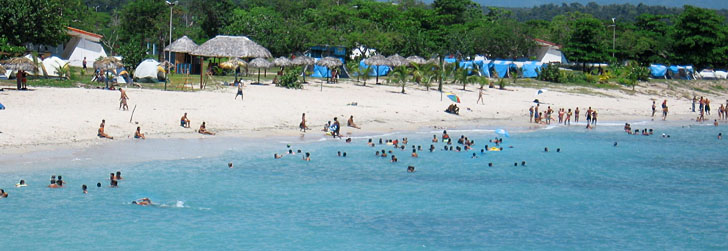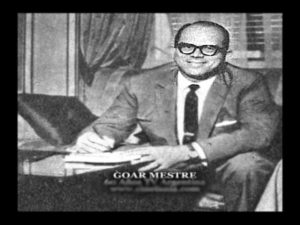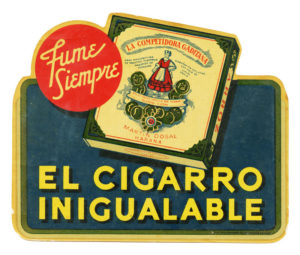The beginning of television in Cuba is marked by two names: Gaspar Pumarejo and Goar Mestre, and by the representation of two transnational monopolies: Dumont and RCA Víctor. Gaspar Pumarejo was the owner of Unión Radio Televisión and he proposed to bring television to Cuba before Goar Mestre, who had been building the 23 and M.
While Goar Mestre, trained at Yale University, built a building, Radiocentro, designed as a cinema, radio and television complex, with a gallery of stores, in the style of Radio City in New York, Pumarejo improvised some studies of television, in his own house in Mazón 52, corner of San Miguel.
It was a race between the Dumont, with whom Mestre had business, and the RCA that would send the teams to Pumarejo.
It was Union Radio Television, which launched the first commercial television signal in Cuba on October 24, 1950 on Channel 4, one of the first in America. In 1957 when around 50 countries had television, in Cuba it was already 7 years old.
The first image televised by Channel 4 was a pack of cigarettes Competitor Gaditana with a jingle by Ñico Saquito, and the inauguration featured the first remote control on TV from the Presidential Palace, with the words of the then President of the Republic, Carlos Prío .
In the evening a great party was broadcast in the gardens of the house, which was attended by Mexican stars, such as Pedro Almendáriz and Cubans such as Carmen Montejo and Raquel Revuelta, and, of course, Gaspar Pumarejo in the foreground, already famous as an announcer of radio. On December 18 of the same year, Channel 6, by Goar Mestre, aired on the dramatic tension program written by Marcos Behmaras and starring Alejandro Lugo.
Cuba was one of the first countries in Latin America to have television (it is erroneously spoken of being the second one when already in Mexico and Brazil they had been there for a few months) and the second country in the world after the USA to transmit color television broadcasts.
It happened in 1958 and allowed Cuba to have the third color TV channel in the history of the world. It should be mentioned that they were also the pioneers in transmitting the first world series of baseball in 1955, live from an airplane, a technological achievement for the time.
PIONEROS DE LA TELEVISIÓN CUBANA: GOAR MESTRE Y GASPAR PUMAREJO.
El inicio de la televisión en Cuba está marcado por dos nombres: Gaspar Pumarejo y Goar Mestre, y por la representación de dos monopolios transnacionales: Dumont y RCA Víctor. Gaspar Pumarejo era el dueño de la Unión Radio Televisión y se propuso traer la televisión a Cuba antes que Goar Mestre, que llevaba meses o quizás años fabricando el gran edificio de 23 y M.
Mientras Goar Mestre, formado en la Universidad de Yale, fabricaba un edificio, el de Radiocentro, concebido como un complejo de cine, radio y televisión, con una galería de tiendas, al estilo de Radio City de Nueva York, Pumarejo improvisaba unos estudios de televisión, en su propia casa de Mazón 52, esquina a San Miguel.
Era una carrera entre la Dumont, con quien Mestre tenía negocios, y la RCA que le enviaría los equipos a Pumarejo.
Fue Unión Radio Televisión, quien lanzó al aire la primera señal de televisión comercial en Cuba el 24 de octubre de 1950 por el Canal 4, una de las primeras en América. En 1957 cuando alrededor de 50 países tenían televisión, en Cuba ya contaba 7 años de edad.
La primera imagen televisada por el Canal 4 fue una cajetilla de cigarros Competidora Gaditana con un jingle de Ñico Saquito, y la inauguración contó con el primer control remoto en TV desde el Palacio Presidencial, con las palabras del entonces Presidente de la República, Carlos Prío.
Por la noche se transmitió una gran fiesta en los jardines de la casa, a la cual asistieron estrellas mexicanas, como Pedro Almendáriz y cubanas como Carmen Montejo y Raquel Revuelta, y, por supuesto, Gaspar Pumarejo en primer plano, ya famoso como locutor de radio. El 18 de diciembre de ese mismo año salió al aire el Canal 6, de Goar Mestre, con un programa dramático de tensión escrito por Marcos Behmaras y protagonizado por Alejandro Lugo.
Cuba fue de los primeros paises de latinoamerica en tener television (se habla erróneamente de ser el segundo cuando ya en México y en Brasil existían desde unos meses antes) y el segundo país del mundo después de USA en transmitir emisiones de televisión en colores.
Ocurrió en 1958 y permitió a Cuba tener el tercer canal de TV a color de la historia del mundo.Cabe mencionar que también fueron los pioneros al transmitir en remoto la primera serie mundial de baseball en 1955 en vivo desde un avión, todo un logro tecnológico para la época.
Agencies/Memorias Cubanas/Carlos Rodríguez/Excerpts/Internet Photos/ Arnoldo Varona/ TheCubanHistory.com
THE CUBAN HISTORY, HOLLYWOOD.



